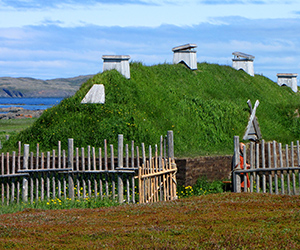CANADA HISTORY - Elections
Liberal Party of Canada

The Liberal Party of Canada is one of Canada’s oldest and most successful political parties, with its origins dating back to the mid-19th century. It emerged as a political force during the era of Confederation in 1867, initially representing a broad coalition of reformist and moderate political elements who were dissatisfied with the conservative political elites of the time. The party’s early roots can be traced to the Reform movement led by figures such as George Brown, a prominent journalist and politician who advocated for responsible government, democratic reform, and representation by population. These early reformers were crucial in shaping Canada’s parliamentary democracy and opposing the colonial elites who favored a more centralized form of government. The Liberals quickly became the main alternative to the Conservative Party, led by Sir John A. Macdonald, and played a key role in the early political landscape of the new nation.
The Liberal Party officially coalesced in the decades following Confederation, solidifying its identity around the principles of liberalism, which, in the Canadian context, emphasized individual freedoms, democratic governance, and economic development. One of the party’s first great leaders was Wilfrid Laurier, who became Canada’s first French-Canadian Prime Minister in 1896 and led the party for over 30 years. Laurier’s tenure was a defining period for the Liberals, during which the party promoted national unity between English and French Canadians, expanded the country’s territory and immigration, and navigated the complex relationship between Canada and the British Empire. Laurier’s vision of a bilingual and bicultural Canada, along with his emphasis on economic development through immigration and Western expansion, helped lay the foundation for the Liberal Party’s identity as a party of national unity and moderate reform.
Throughout the 20th century, the Liberal Party built a reputation as the “natural governing party” of Canada, consistently adapting to changing political and economic realities while maintaining a centrist position that balanced progressive social policies with economic pragmatism. The Liberals often framed themselves as the party of modernization and reform, willing to embrace change while maintaining stability. One of the most transformative periods in the party’s history came under the leadership of William Lyon Mackenzie King, who served as Prime Minister for an unprecedented 22 years between 1921 and 1948. King led Canada through both the Great Depression and World War II, implementing a range of social and economic reforms that laid the groundwork for the modern Canadian welfare state. Under King’s leadership, the Liberals introduced policies such as unemployment insurance and family allowances, which were early steps toward the development of Canada’s social safety net.
Following King, the Liberal Party continued to evolve under the leadership of Louis St. Laurent in the 1950s and Lester B. Pearson in the 1960s. St. Laurent, known for his affable style and pragmatic approach, presided over a period of economic growth and national development, including the construction of the Trans-Canada Highway and the St. Lawrence Seaway. His government also introduced major social policies such as universal pensions and hospital insurance, further expanding the social safety net. Pearson, a Nobel Peace Prize laureate, continued this legacy of progressive reform, most notably by overseeing the creation of Medicare, Canada’s publicly funded universal healthcare system, and the introduction of the Canada Pension Plan. Pearson also played a key role in shaping Canada’s modern identity, including the adoption of the Maple Leaf flag in 1965, which became a powerful symbol of Canadian nationalism and independence from British colonial symbols.
One of the most influential figures in the Liberal Party’s history was Pierre Elliott Trudeau, who became leader in 1968 and served as Prime Minister for much of the next two decades. Trudeau brought a new level of charisma and intellectualism to Canadian politics, promoting a vision of a just society that emphasized individual rights, national unity, and a strong federal government. His government was responsible for implementing the Official Languages Act in 1969, which enshrined bilingualism in Canadian law and aimed to promote equality between English and French-speaking Canadians. Trudeau is perhaps best known for his role in patriating the Canadian Constitution in 1982 and introducing the Canadian Charter of Rights and Freedoms, which became a cornerstone of Canadian law and a defining element of the country’s political culture. The Charter guaranteed fundamental rights and freedoms to all Canadians and established the principle of judicial review, allowing courts to strike down laws that violated those rights.
However, Trudeau’s tenure was not without controversy, particularly in relation to his handling of Quebec’s growing separatist movement. His fierce opposition to Quebec sovereignty, particularly during the 1970 October Crisis, when he invoked the War Measures Act to deal with a terrorist threat from the Front de libération du Québec (FLQ), was both praised and criticized. While Trudeau’s strong federalist stance helped preserve national unity, it also deepened divisions in Quebec and alienated some voters. Nonetheless, Trudeau remains one of the most iconic and polarizing figures in Canadian political history, and his influence on the Liberal Party’s philosophy—particularly its commitment to civil liberties, national unity, and social justice—continues to shape the party to this day.
The Liberal Party faced significant challenges following Trudeau’s retirement in 1984, particularly under the leadership of John Turner and Jean Chrétien. Turner’s short-lived government was plagued by internal party divisions and a resurgent Conservative Party under Brian Mulroney, leading to a landslide defeat in the 1984 election. However, under Chrétien’s leadership from 1993 to 2003, the Liberals regained their dominance. Chrétien, a populist and pragmatic leader, presided over a period of economic recovery following the recession of the early 1990s. His government’s focus on fiscal responsibility, including balancing the federal budget and reducing the national debt, restored public confidence in the party. Chrétien also implemented important social policies, including the Clarity Act, which clarified the legal conditions under which Quebec could hold a referendum on sovereignty, and the Legalization of Same-Sex Marriage, a significant milestone in Canada’s progress toward LGBTQ+ rights.
Chrétien’s long tenure gave way to internal leadership struggles, culminating in the rise of Paul Martin, who succeeded Chrétien as Prime Minister in 2003. Martin, a respected finance minister known for his role in eliminating Canada’s deficit, struggled to maintain the party’s unity and lost the 2006 election to Stephen Harper’s Conservatives, ending the Liberal Party’s 13-year run in government. Over the next decade, the Liberals would face one of their most challenging periods, suffering successive defeats under Stéphane Dion and Michael Ignatieff, and even being relegated to third-party status in the 2011 federal election.
The Liberal Party’s revival came under the leadership of Justin Trudeau, Pierre Trudeau’s son, who was elected leader in 2013. Justin Trudeau’s charismatic leadership and progressive platform, which focused on issues such as middle-class tax cuts, climate action, and social justice, helped the Liberals win a decisive victory in the 2015 federal election, bringing the party back to power. Trudeau’s government quickly moved to implement key campaign promises, including legalizing cannabis, introducing a national carbon pricing plan to combat climate change, and reforming Canada’s child benefit system to help low-income families. His government also prioritized gender equality, appointing Canada’s first gender-balanced cabinet, and made significant efforts toward reconciliation with Indigenous peoples, including launching a national inquiry into missing and murdered Indigenous women and girls.
However, Trudeau’s government has faced its share of controversies and challenges. In his second term, following the 2019 election, his leadership was tested by the SNC-Lavalin scandal, in which the Prime Minister’s Office was accused of attempting to interfere in a criminal prosecution of a major Quebec engineering firm. This controversy, along with criticism over the government’s handling of Indigenous land rights and environmental policies, caused some erosion in the Liberal Party’s popularity. Nevertheless, the Liberals won re-election in 2019 and again in 2021, albeit with minority governments. Throughout these years, the party has maintained a strong focus on progressive issues, including climate change, affordable housing, universal pharmacare, and Indigenous reconciliation.
Today, the Liberal Party of Canada remains one of the two major political forces in the country, alongside the Conservative Party. Its current political philosophy is centered on progressive liberalism, which combines market-based economics with strong social welfare policies, environmental sustainability, and a commitment to multiculturalism, immigration, and human rights. The Liberals emphasize economic growth through innovation and trade while maintaining a robust social safety net, and they advocate for active government intervention in areas such as climate policy and healthcare to ensure fairness and equality.
In summary, the Liberal Party of Canada has a long and storied history, marked by periods of great success and influence on Canadian politics and society. From its early days as a reformist movement to its role in shaping modern Canada under leaders like Wilfrid Laurier, William Lyon Mackenzie King, Lester Pearson, Pierre Trudeau, and Justin Trudeau, the Liberals have consistently championed policies that emphasize national unity, individual rights, and social justice. While the party has faced challenges and controversies, it remains a dominant force in Canadian federal politics, continuing to evolve and adapt to the needs of a diverse and changing country.
ChatG
Cite Article : Reference: www.canadahistory.com/sections/documents/documents.html
Source: NA



